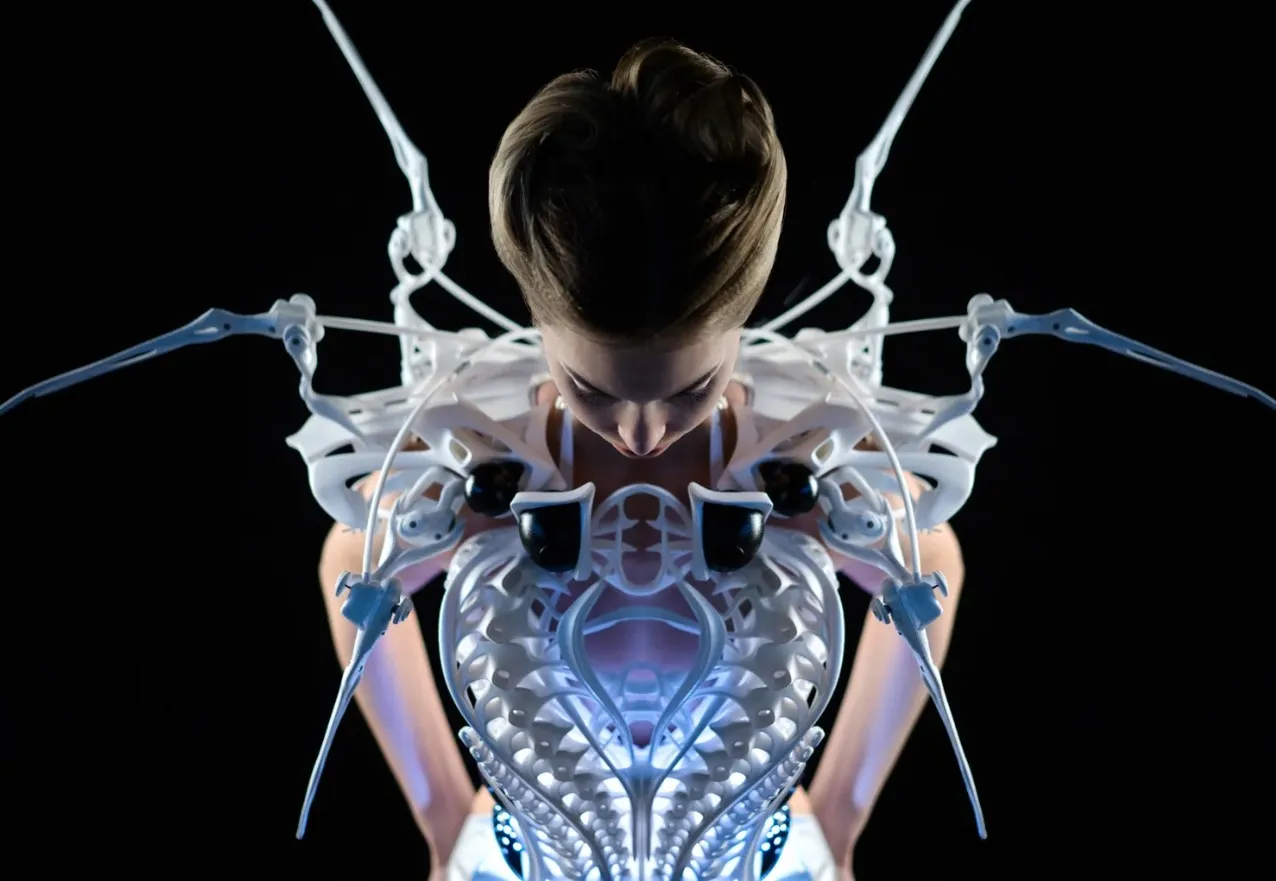
Fashion and architecture have long shared a connection to date, two creative art worlds that shape how we live and express ourselves.The technological evolution creates a relationship that grows even deeper through AI and computational design. The boundaries between fabric and façade are dissolving, giving rise to wearable architecture. Wearable architecture, facilitated by AI and computational design, becomes a fascinating fusion where architecture extends the body form.
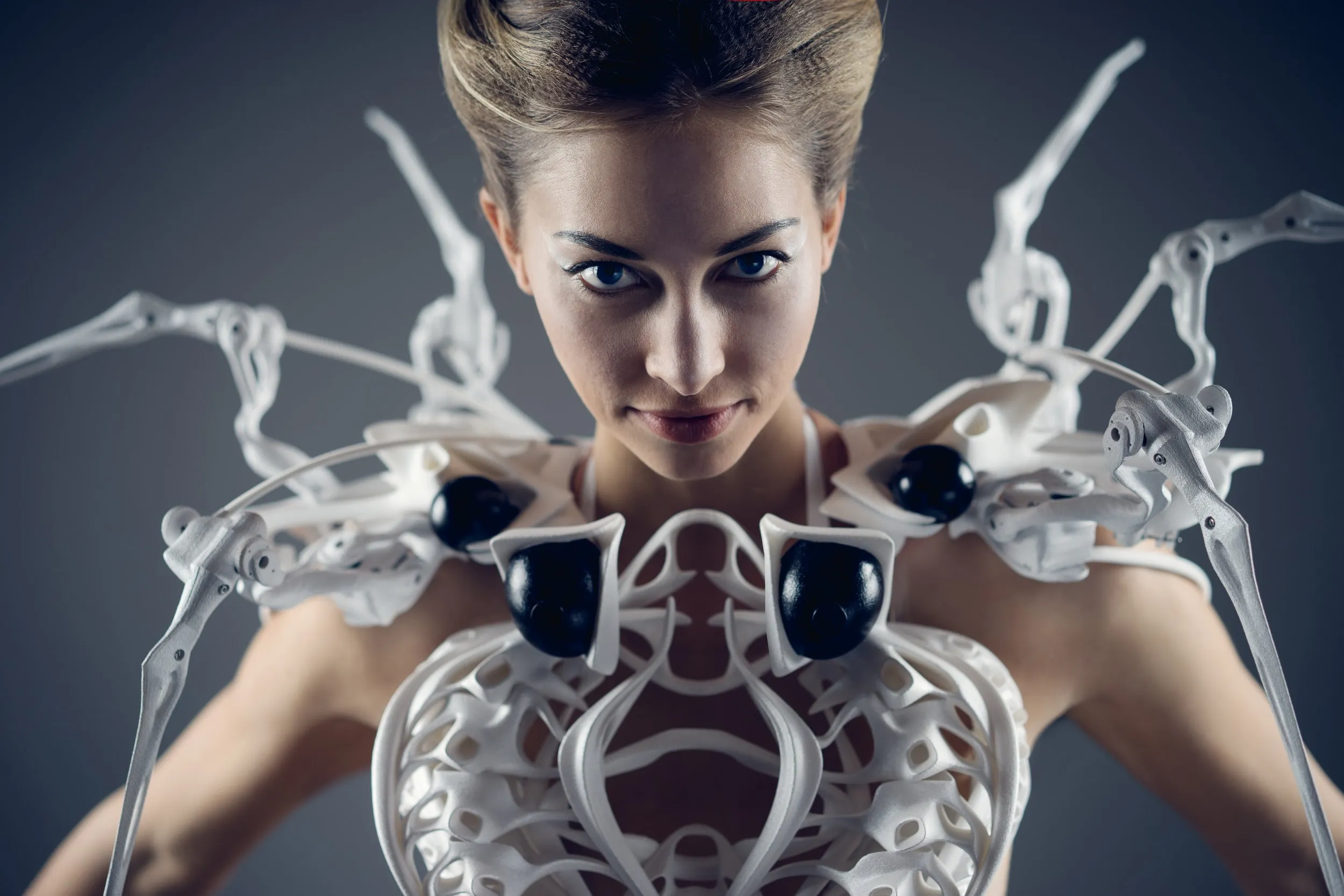
Wearable Architecture blurs the boundary between body and building, weaving fashion, technology, and architecture into a living, breathing form of expression. Evolving since the late 1960s, when designers first explored garments as both clothing and shelter, this field redefines how we experience space and self. By merging digital intelligence with craftsmanship, designers now create pieces that respond to movement, temperature, and emotion and an architecture that listens, learns, and lives with us.
AI and computational design are redefining wearables through modern technology advancements that craft fashion that feels alive. Through intelligent algorithms, designers can now analyze human movement, climate, and material behaviour to create forms that elevate comfort, performance, and personal expression. These systems explore countless design possibilities, evolving and refining each iteration to respond seamlessly to ergonomics, flexibility, and adaptability.
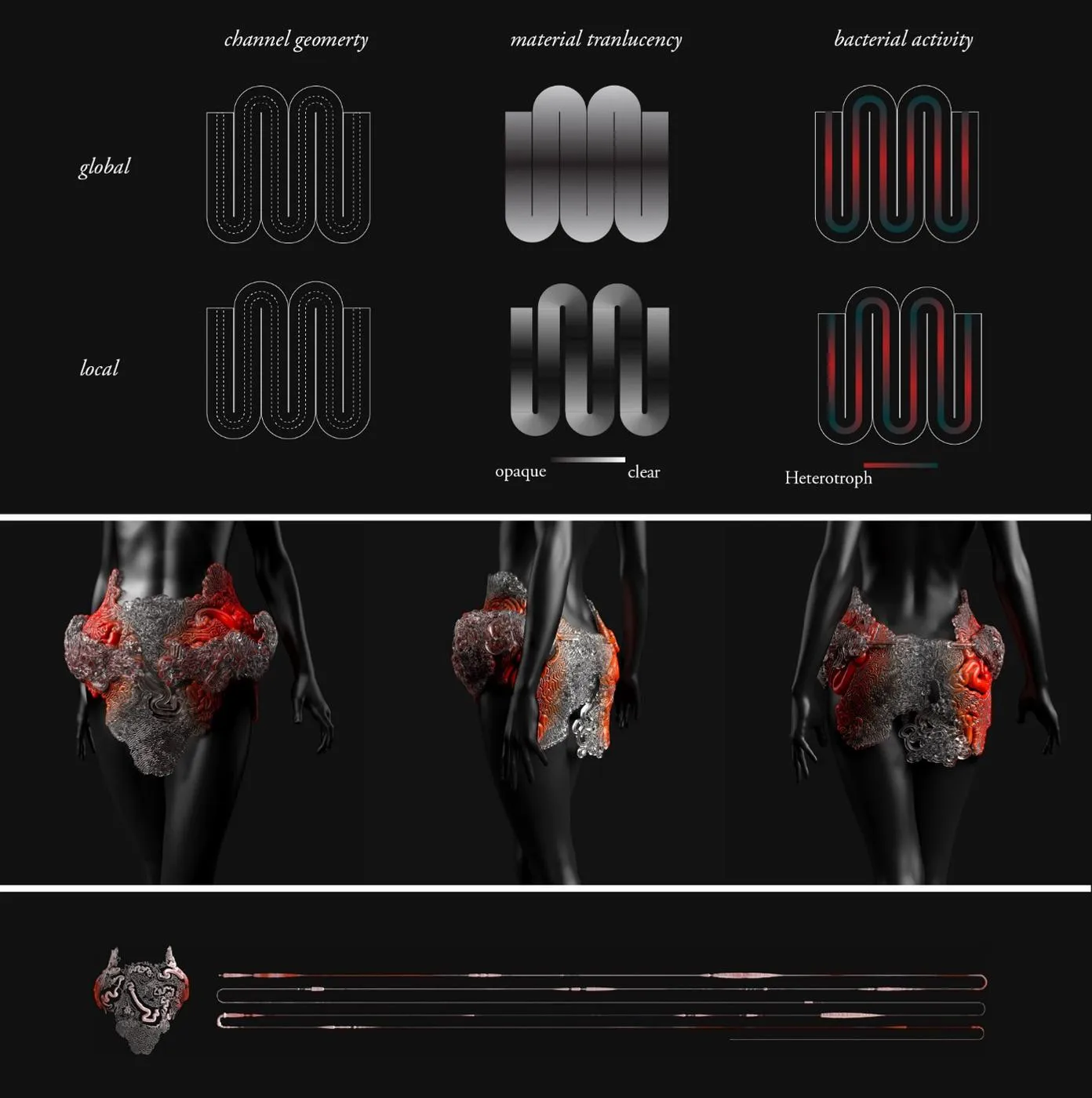
Applications of AI and computational design in creating wearable architectural designs;
In today’s design process, AI is no longer just a tool; it is a creative partner, utilizing platforms like TensorFlow, Runway ML, Midjourney, and DALL·E to revolutionize the way designers imagine and craft wearable architecture. Listed below are some applications of AI and computational design during the process of designing wearable architecture.
Generative Form Design – AI algorithms and tools assist parametric software in exploring endless design possibilities that help optimize, alter, and change the design.
Dynamic Designing – Computational design helps in simulating and creating forms that respond dynamically to human movement and forms, ideal for wearable architecture design.
Customization – AI-driven modelling and scanning allow designers to create body-specific architecture, ideal for designing wearable architecture for specific body types.
Responsiveness – AI systems with sensor systems enable wearable architecture designs to respond to external factors, assisting in creating real-life architecture.
Digital Fabrication – Parametric model generation integrated with AI systems helps in seamless transition from concept to prototypes, and helps quicker modelling, analysis, and editing.
-53.webp)
Listed below are key software utilized during wearable architecture designing and modelling.
Rhinoceros 3D + Grasshopper – One of the popular 3D Modelling software used by architects and designers, the foundation software for parametric and computational design. The software helps in form generation, performance analysis, and editing complex forms.
Autodesk Fusion 360/ Autodesk Generative Design – The software utilizes an AI-assisted structural optimization tool, which is particularly for wearables and exoskeleton structure and form generation with analysis.
CLO3D/Marvellous Designer – The software used for digital simulation that merged textile behaviour with architectural form, a great software for wearables design and architecture.
Blender + Python Scripting – The software allows integrating AI-based algorithms for computational and generative modelling and simulation, exploring fashion and architectural forms.
5. Ansys / COMSOL Multiphysics – Simulating tools that help test performance, material deformation, and comfort of the adaptive wearable’s materials.
Read further to explore five wearable architectures designed and created with the application of AI and Computational design. To explore further such a unique workshop on wearable architecture and designing, check out the upcoming workshop ‘Body Architecture 4.0’ on PAACADEMY.

Architect/Designer: Anouk Wipprecht
Completed: 2015
3D Model/Printing application: Autodesk Maya and Rhinoceros 3D + Grasshopper
AI/Computational design application: Platforms like Arduino, Python-based machine, etc
The spider dress designed by Anouk Wipprecht is a characteristic piece of clothing designed with a concept of a dress reacting to the wearer’s personal spaces through the robotic extensions. It is a groundbreaking example of wearable architecture, where fashion, architecture, and technology, with AI integrated, form a futuristic wearable. Designed and created using AI and computational design integrated with 3D modelling and printing software. The intricate form of the dress, generated through parametric modelling and futuristic tools, is not only a dress but an interactive and adaptive extension of the body acting as a defence mechanism.

The characteristic design features an AI algorithm and sensors integrated, which help the user detect motion and proximity through the dress. The defence responsive mechanism helps people avoid invading the wearer's personal space. Together with the tools and software, it is a seamless blend of digital technology, robotic motion, and wearables architecture reimagining fashion and architecture.
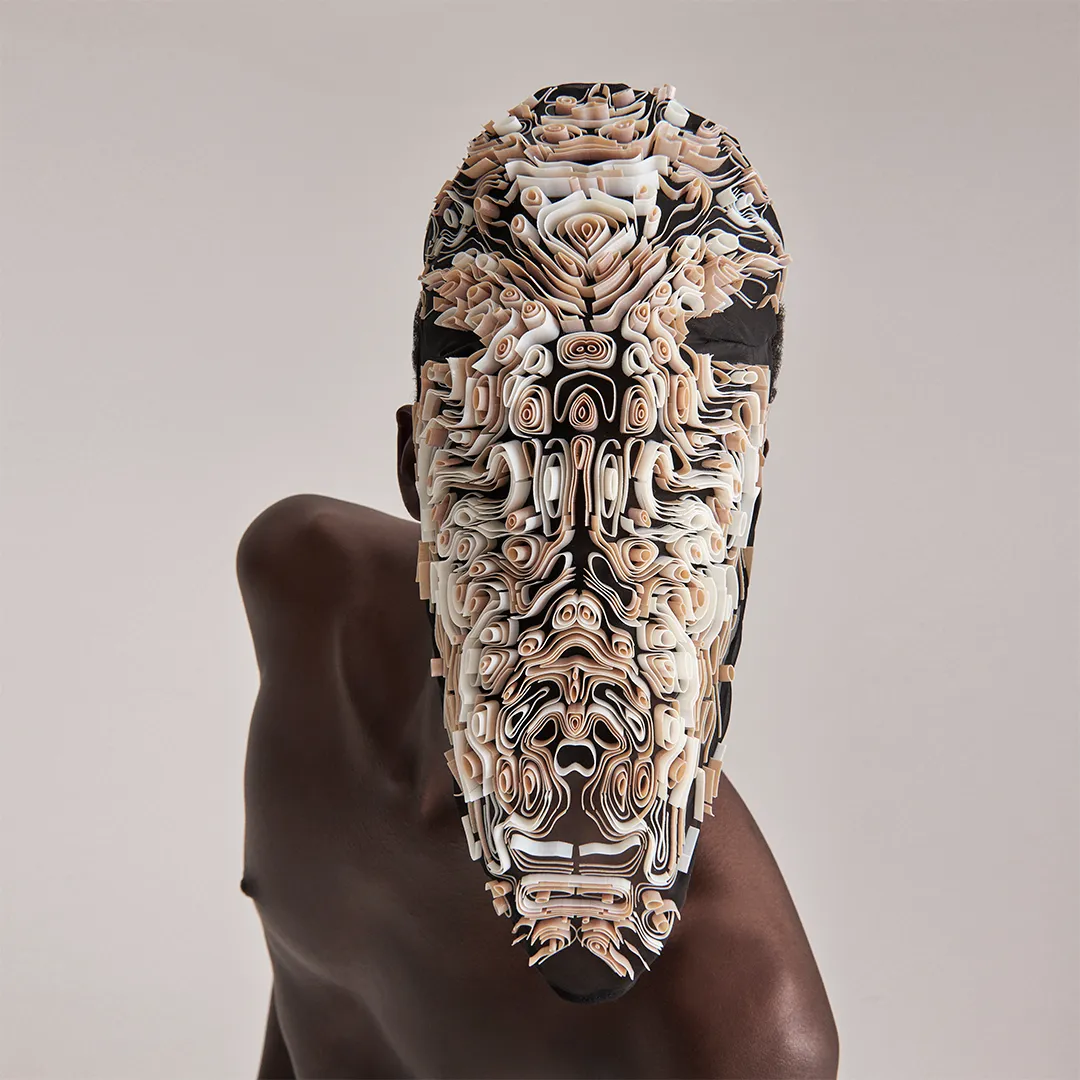
Architect/Designer: Filippo Nassetti
Completed: 2021
3D Model/Printing application: Rhinoceros 3D and Grasshopper
AI/Computational design application: AI-driven tools such as Python scripting, Kangaroo, Galapagos, etc.
Filippo Nassetti reimagines protective masks, transforming the medical products born out of emergency into a characteristic artistic statement expressing contemporary identities. Born from the urgency of the pandemic, the Thalassic Masks look toward a future shaping climate change and ecological disruption, where protection becomes both necessity and statement. Inspired by the mysterious beauty of deep-sea life, jellyfish, corals, and other aquatic organisms that filter water for oxygen, adapt, and conceal themselves. Thalassic transforms these natural survival mechanisms into futuristic, flowing forms that merge science, art, and resilience.

The Masks were shaped through advanced AI and computational design, allowing every curve and texture to be defined with precision. From concept generation to material behaviour, data-driven algorithms were modelled into intricate patterns that balance flexibility, colour, and structure. Layer by layer, unique polymer forms were fused onto delicate chiffon, guided by adaptive algorithms that translated thermal studies into responsive forms, creating masks that are as functional as they are poetic, merging digital intelligence with organic elegance.
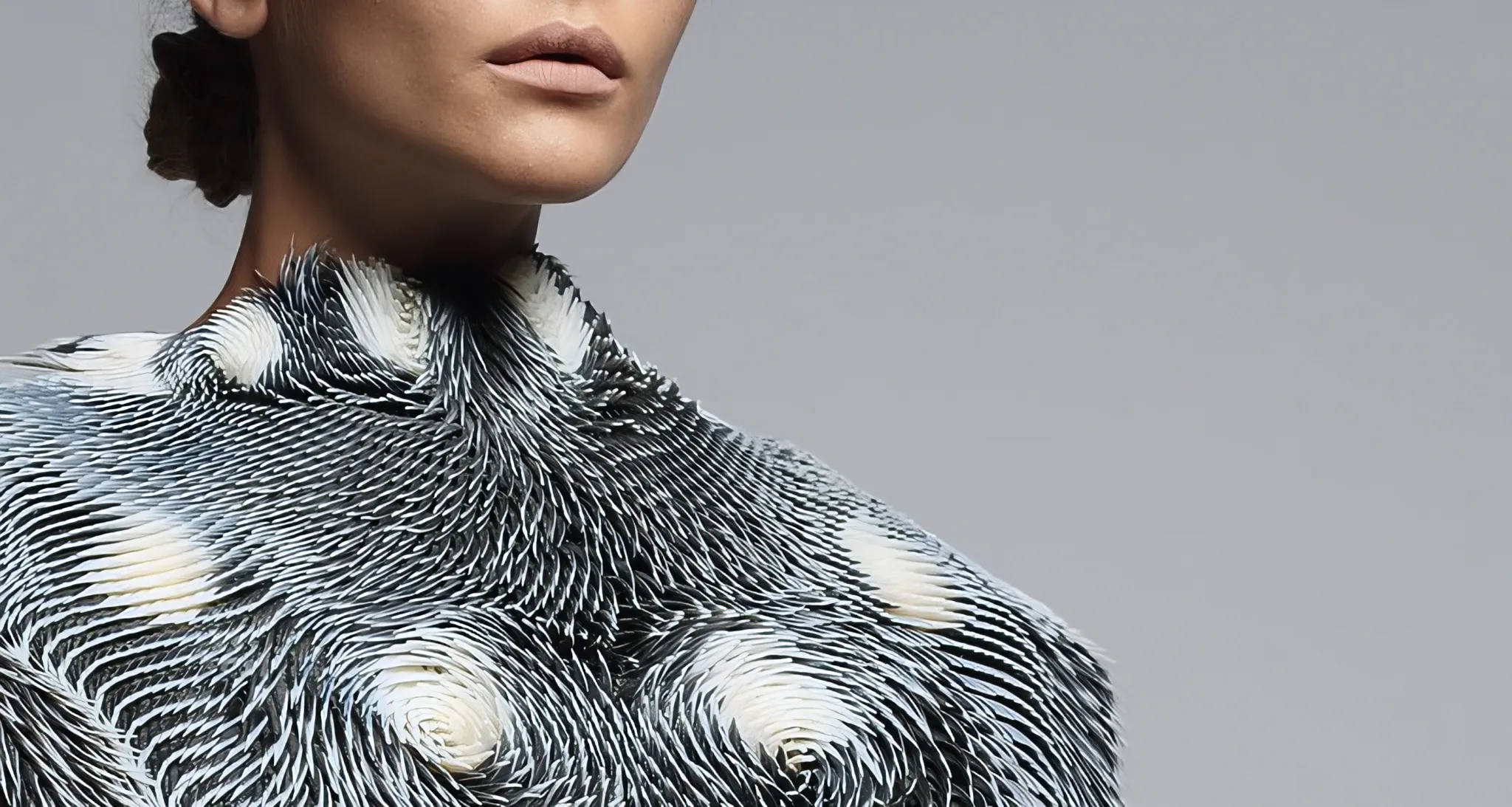
Architect/Designer: Behnaz Farahi
Completed: 2015
3D Model/Printing application: Autodesk Pier 9 and Madworkshop
AI/Computational design application: AI-driven software assisting with fascial tracking detectors
Caress of the Gaze, designed by Behnaz Farahi, is an interactive, gaze-responsive wearable that blurs the line between technology innovation and emotional interaction. Developed with the support of Autodesk Pier 9 and Madworkshop, the project envisions the future of second-skin design through advanced multi-material modelling, AI integration, and 3D printing. Inspired by the fluid behaviour of human skin, the garment dynamically adapts, shifting from soft to rigid in different areas of the body. The unique fusion of fashion, technology, and artificial intelligence, where fabric not only moves with you but also responds to you.
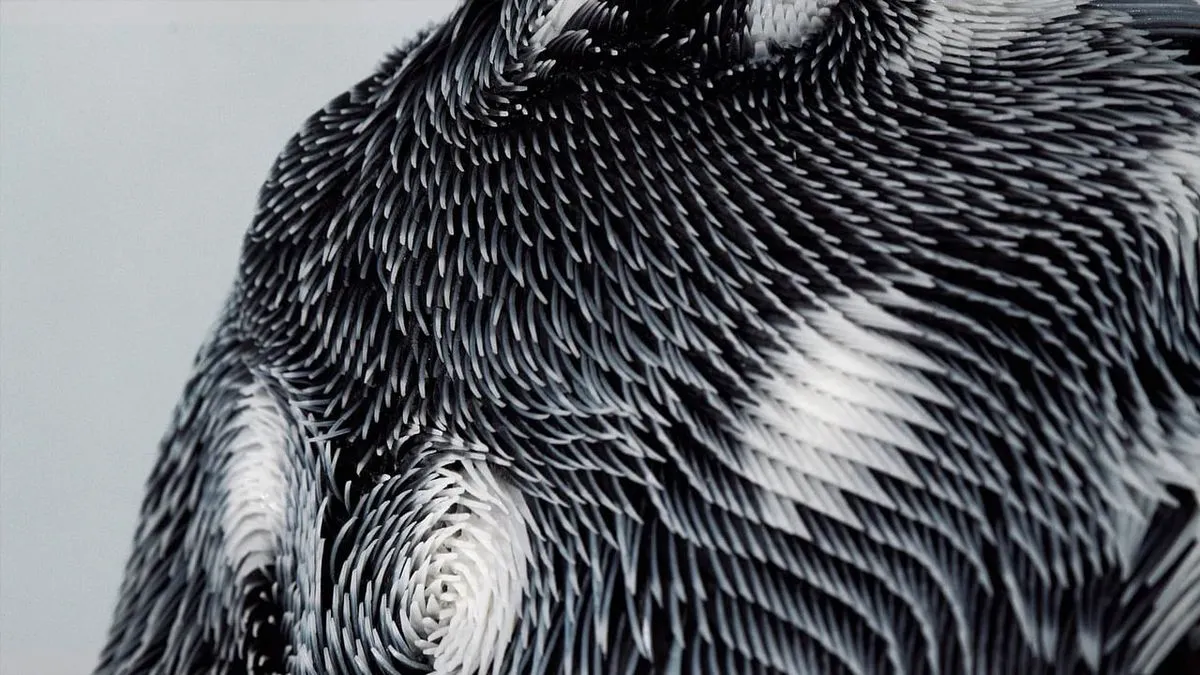
The characteristic feature of the dress is the application of an actuation system, which is assembled as a form of muscle system using Shape Memory Alloy actuators (SMA) that help and inform the motion of the skin. Guided by an AI-powered facial tracking system, the dress senses when and where it is being looked at, responding with subtle, real-time movements across its surface. This fusion of technology and empathy turns fabric into a form of emotional intelligence. Wearable architecture that perceives, reacts, and communicates like human skin, blurring the boundaries between body, emotion, and design.
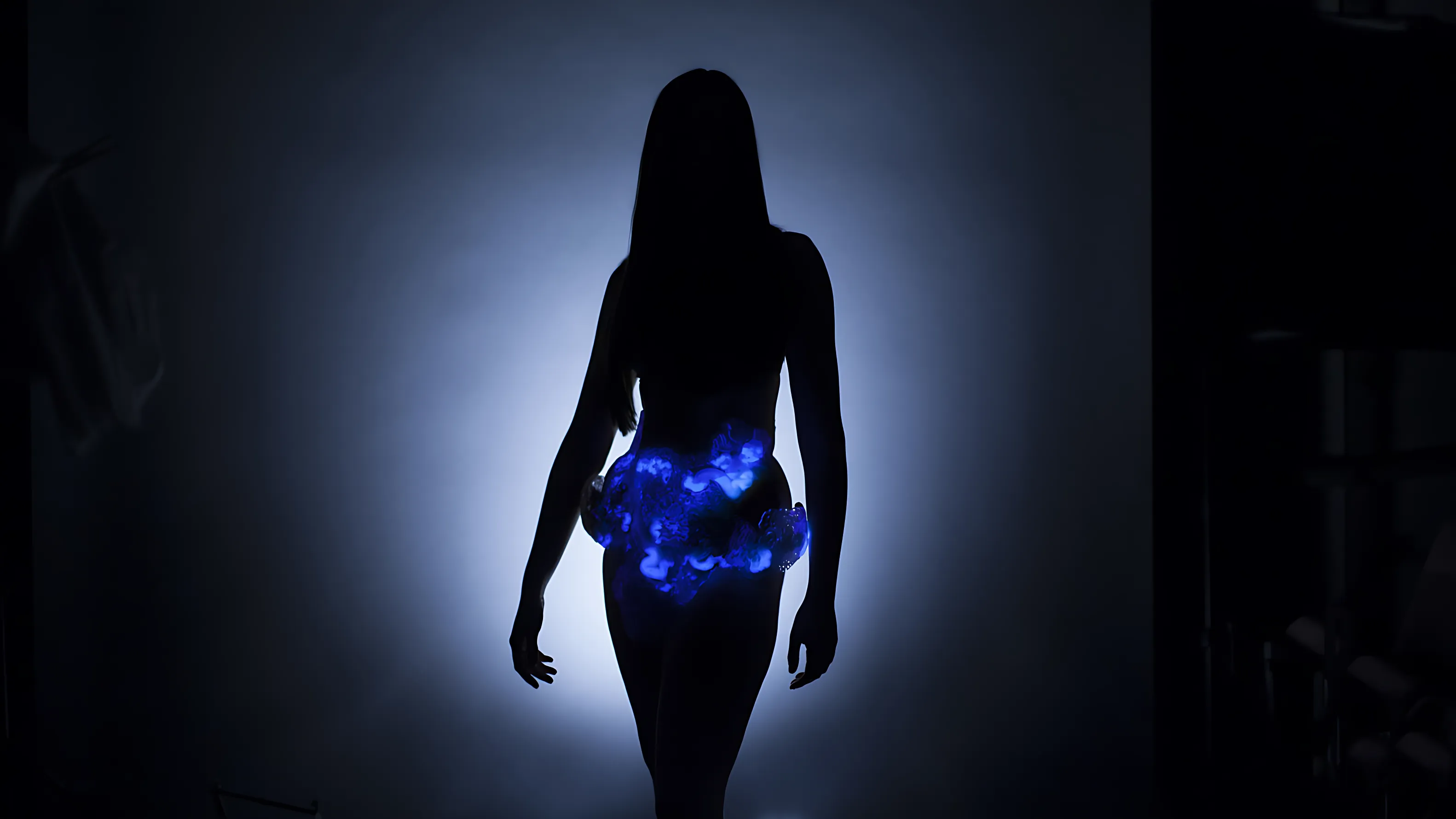
Architect/Designer: Neri Oxman, along with Mediated Matter
Completed: 2014
3D Model/Printing application: Stratasys – 3D Printing
AI/Computational design application: Generative algorithms simulate biological growth
Directed by visionary architect and designer Neri Oxman, ‘Living Mushtari’ is a groundbreaking piece of wearable architecture completed by the Mediated Matter Group in collaboration with Stratasys. Part of the Wanderers Collection, it reimagines clothing as a living ecosystem- an astrobiological exploration inspired by medieval astronomers who journeyed through worlds within to understand worlds beyond. Designed to host living microorganisms, the wearable channels sunlight, generating consumable energy, creating wearables that blur the line between biology, technology, and the fabric itself.
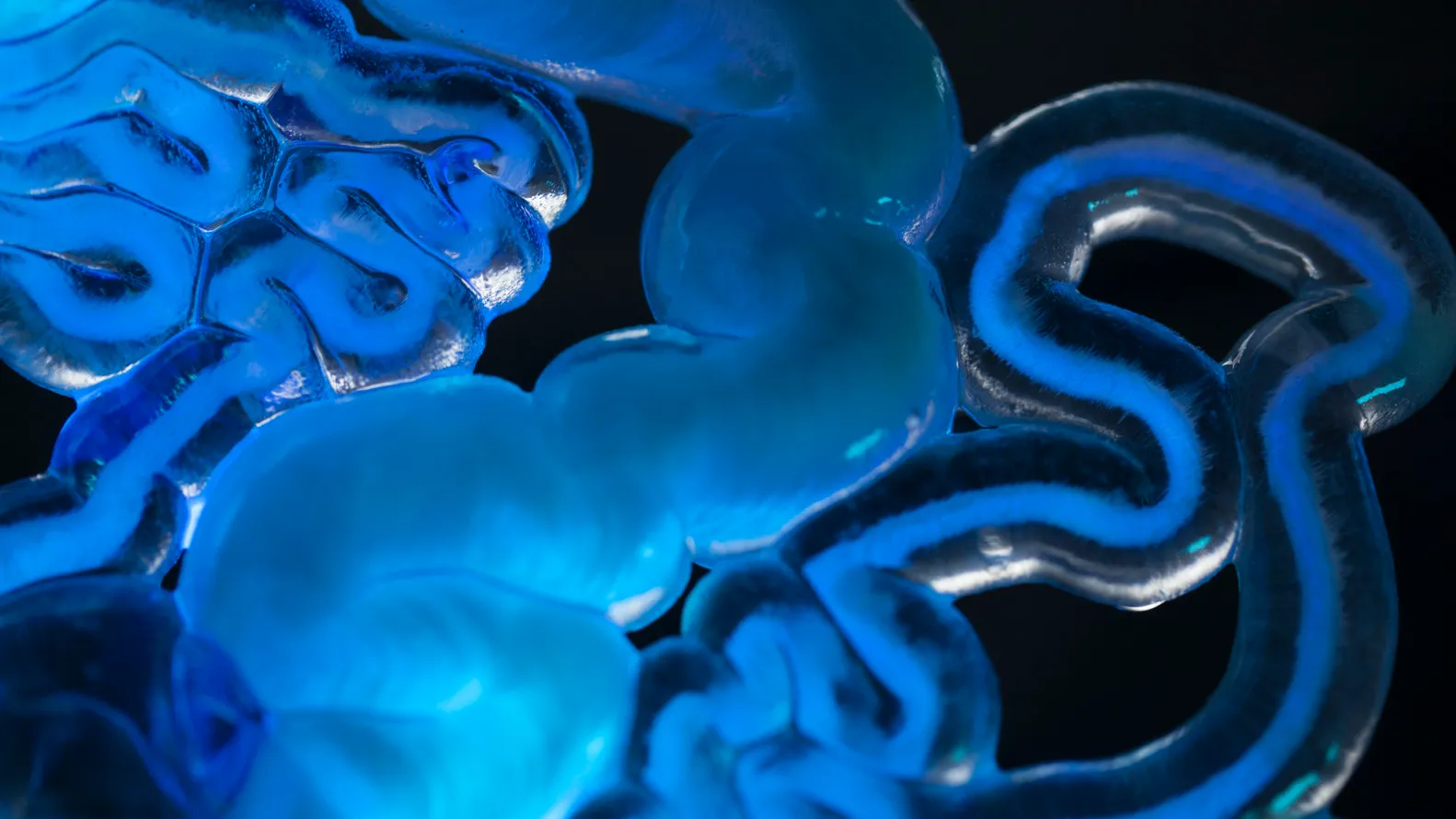
The wearables embody the idea of a living, breathing architecture, where biology, AI, and design merge to create sustaining life directly on the body. Crafted with 3D printing, the intricate structure contains 58 meters of internal fluid channels that use synthetic biology to transform sunlight into useful substances for the wearer, from scents and pigments to biofuel. Designed with generative growth algorithms, its organic form evolves like a living organism, mirroring the logic of natural growth through iterative digital processes. Brought to life using the Objet Connex3 multi-material 3D printer by Stratasys, this masterpiece transforms the human body into a vessel of creation, blurring the boundary between the living and the designed.
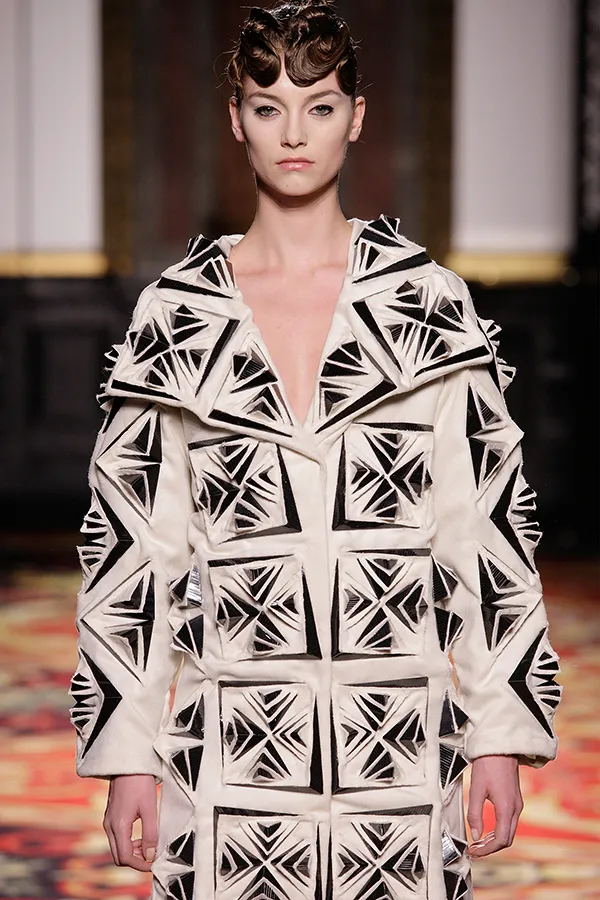
Architect/Designer: Iris van Herpen
Completed: 2013
3D Model/Printing application: Autodesk Maya and Rhinoceros 3D + Grasshopper
AI/Computational design application: AI and generative design algorithms mapping natural field lines and structural flows.
In her Voltage Collection, visionary couturier Iris van Herpen transforms the unseen forces of electricity, magnetism, and energy into breathtaking works of wearable architecture. Electricity plays a central role in the entire collection; electricity becomes more than inspiration, it is the heartbeat of each design. The designer collaborated with an artist and Professor Philip Beesley to develop 3D fabrics for several monochrome silhouettes, whose sensitive antennae vibrate to the energy of the entire body.

The invisible forces of energy were translated into dynamic architectural forms by AI and generative design algorithms that map the natural field lines, then 3D printed and laser cut. Using 3D modelling, laser cutting, and 3D printing software, the designer collaborated with Neri Oxman and Philip Beesley in creating fluid, sculptural pieces that captured the visual essence of energy's movement and power through wearables.
You must be logged in to comment.